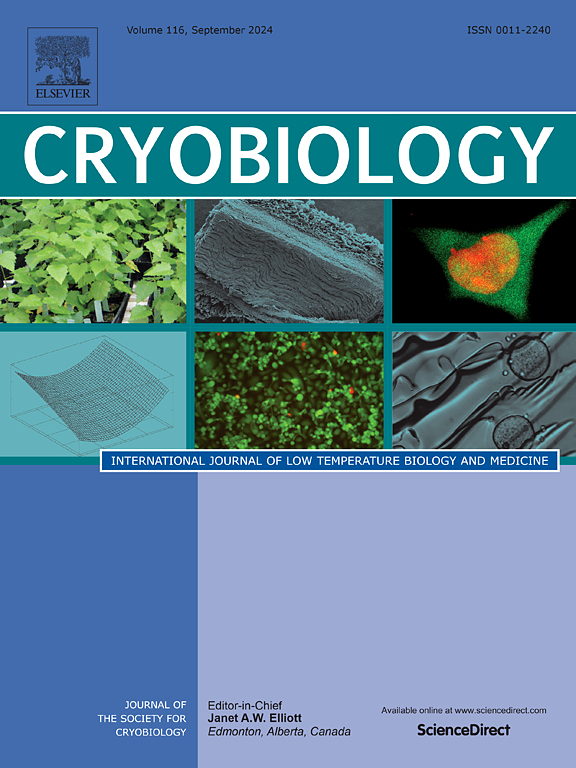自动装置,通过控制浸没快速冷却样品
IF 2.1
3区 生物学
Q2 BIOLOGY
引用次数: 0
摘要
描述了一种自动化装置,它可以在液氮中进行可编程浸泡,以实现玻璃化应用的快速样品冷却。这里介绍的设备成本低,便携,并与一系列低温容器兼容。该设备能够以一定的速度浸泡样品,使用户能够根据样品的热质量以及容器和生物标本的热性能优化冷却速率。该装置由一个驱动线性执行器的步进电机组成,该执行器使3d打印机械臂在垂直平面上运动,用于将样品快速浸入冷冻剂中。开发完成后,对该装置的设计参数进行了验证。启动高度和淹没距离的相对误差均小于1.5%,说明在运行过程中定位精度高,一致性好。由此得出的冷却速率在手动和自动浸泡之间没有显著差异,证实了设备的性能和可靠性。用0.25 mL人工授精吸管进一步评价该装置的性能,以评价其实际应用。所获得的冷却速率完全在之前报告中引用的范围内,也在计算预测的范围内,证实了该设备的功能。重要的是,这种装置可以用市售材料以相对较低的成本制造。本文章由计算机程序翻译,如有差异,请以英文原文为准。
Automated device for rapid sample cooling via controlled submersion
An automated device is described which enables programmable submersion in liquid nitrogen to enable rapid specimen cooling for vitrification applications. The device presented here is low-cost, portable, and compatible with a range of cryogenic containers. The device is capable of submerging samples at a range of speeds, enabling the user to optimize the cooling rates based on the thermal mass of the sample as well as the thermal properties of the container and biospecimen. The device consists of a stepper motor that drives a linear actuator, which enables the movement of a 3D-printed robotic arm in the vertical plane which is used to submerge the specimen rapidly into the cryogen. After development, the device was validated for its design parameters. The relative error in starting height and submersion distance was less than 1.5%, indicating a high degree of precision and consistency in positioning during operation. The resulting cooling rates showed no significant difference between manual and automated submersion, confirming the device's performance and reliability. The device performance was further assessed using a 0.25 mL insemination straw to evaluate its practical application. The cooling rate achieved was well within the range cited in previous reports as well as that predicted computationally, confirming the device's functionality. Importantly, this device can be constructed using commercially available materials at relatively low costs.
求助全文
通过发布文献求助,成功后即可免费获取论文全文。
去求助
来源期刊

Cryobiology
生物-生理学
CiteScore
5.40
自引率
7.40%
发文量
71
审稿时长
56 days
期刊介绍:
Cryobiology: International Journal of Low Temperature Biology and Medicine publishes research articles on all aspects of low temperature biology and medicine.
Research Areas include:
• Cryoprotective additives and their pharmacological actions
• Cryosurgery
• Freeze-drying
• Freezing
• Frost hardiness in plants
• Hibernation
• Hypothermia
• Medical applications of reduced temperature
• Perfusion of organs
• All pertinent methodologies
Cryobiology is the official journal of the Society for Cryobiology.
 求助内容:
求助内容: 应助结果提醒方式:
应助结果提醒方式:


